Related Content
Content
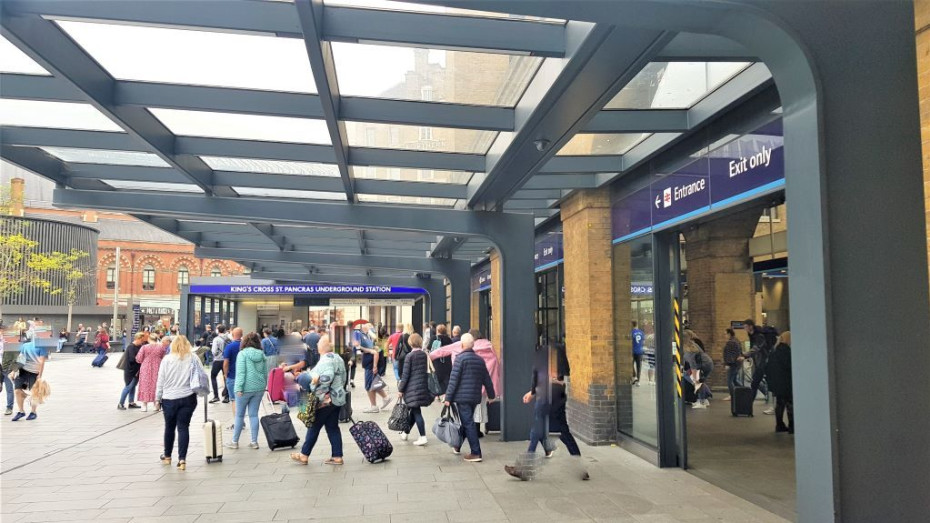
How to travel between King's Cross and other London stations
Tips for making the easiest possible transfers across the city centre when travelling between King's Cross and the other major stations in central London.
Share
These guides on how to travel between King's Cross and the other London stations are focused on, or at least include, the easiest routes - so that the simpler alternatives when travelling with heavy luggage or with young children etc can be followed.
Also note the advice for travel to a station from King's Cross can vary from that on how to access King's Cross from another station. This is for multiple reasons including the availability of lifts (elevators) in various locations and the access to and from bus stops.
At weekends the Underground lines and both the cross-London Elizabeth line and Thameslink trains can be impacted by construction work, those affecting the Underground and Elizabeth line trains can be looked up here, while those impacting the Thameslink trains, can be found here.
Good to know:
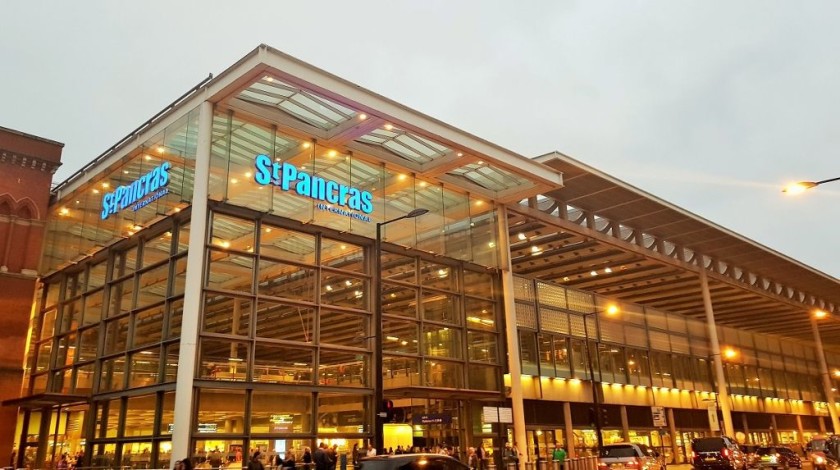
There are three options for travelling onwards by train from King's Cross.
(1) The ''tube lines of the Underground, the Northern, Piccadilly and the Victoria 'tube' lines.
(2) The Circle, Hammersmith & City and Metropolitan lines, which use their own specific area of the Underground which is in front of St Pancras station.
(3) The Thameslink trains which depart from a separate station, which is beneath the St Pancras International terminal, but the transfer only takes two minutes.
Use the exit from King's Cross on to Pancras Road - pictured above, which leads off from the main concourse on the opposite side to the departure boards, you'll then see the entrance to St Pancras just across the street.
Once you have entered St Pancras International go straight ahead and you will then see the entrance to the part of the station, used by Thameslink trains, over to the right, on the other side of a ticket desk.
A Summary of how the ticketing works
All of the ticket gates at central London stations have 'readers' which enable contactless payment.
Regardless of whether you are resident in the UK, or are visiting, there are three methods of using Contactless:
- A payment app on a mobile device, including your bank's contactless payment app, or the likes of Google Pay, Apple Pay, or Samsung Pay.
- A debit / credit card as long as it has the contactless symbol
- An Oyster card (you touch in and out as you do when using Contactless).
Good to know about using Contactless
- The system works by touching in and out.
- When using bank cards, take care to use the same card when touching out at the end of a journey, as you did when touching in at the start.
- You have to pay with Contactless on the regular red buses, you cannot pay with cash.
- When travelling by the Underground or Elizabeth line, you can save 10 - 20p per journey by paying with a banking app / card instead of an Oyster card.
- Making a Contactless payment is cheaper than buying a ticket from a station counter or machine - the price difference is usually at least 50%!
More info is available on the general London by train guide.
From King's Cross
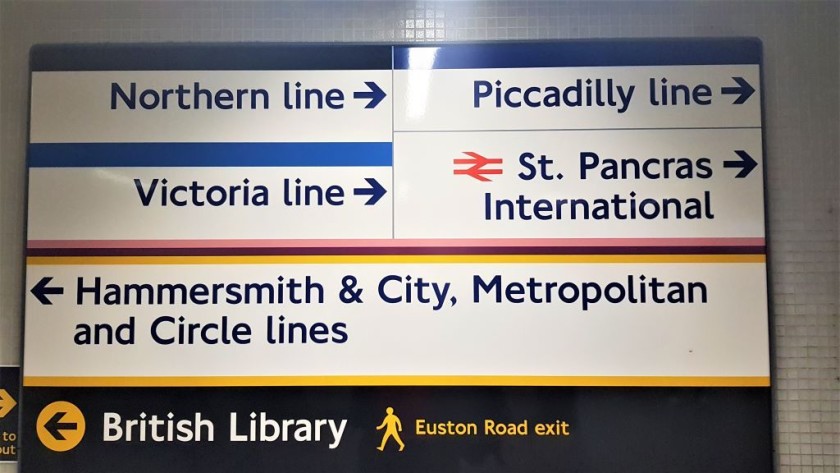
If your train has arrived at platforms/tracks 0-8, the first access point to the Underground which you will see is over to the left, just outside the station; this entrance is pictured at the top of the page, there is a lift (elevator) available just behind the staircase.
At the foot of this access point, there are signs, pictured above, which say go left for the Circle, Hammersmith & City and Metropolitan Line trains and right for the Northern, Piccadilly and Victoria Lines.
But trust me on this, if you’ll be heading for the Northern and Piccadilly Lines, also go to the left and NOT to the right.
Just over to left is one of the ticket halls in the Underground station, and this ticket hall houses an escalator which leads directly down to the Northern and Piccadilly lines.
The alternative route to these two lines, which the signs are suggesting you follow, is at least 5 mins longer, as it will lead you through a more distant ticket hall.
But if you arrive at platforms 9 – 11 the closest access to the Underground will take you down to that alternative ticket hall.
From there you can just follow the signs pointing you in the direction of each respective line, as there aren't any short cuts available
to Euston
It's a 10 - 15 min walk to Euston station from King's Cross along Euston Road, so being a pedestrian is easier and cheaper than taking the Underground.
However, if the weather isn't conducive, take the northbound Northern line and avoid the Victoria line, as you then won't have to walk so far in the Underground station to access the trains.
to Liverpool Street
Take any eastbound train on the Circle, Hammersmith & City and Metropolitan lines, they all leave from the same platform, which can be accessed by lift (elevator) from the ticket hall above these lines.
The trains will then arrive at Liverpool Street on a platform which is adjacent to its Underground station's ticket hall.
From here a short flight of steps lead up to the station's main concourse , a lift (elevator) is also available over to the right.
to London Bridge
The easiest route to London Bridge, particularly if you have luggage, is to head over the street to St Pancras station, using the exit at King's Cross on to Pancras Road, which leads off from the main concourse on the opposite side to the departure boards.

You'll then seen this entrance, pictured above to St Pancras International on the other side of the street.
Once you have entered St Pancras International station go straight ahead and you will then see the entrance to the part of the station, used by Thameslink trains, over to the right, on the other side of a ticket desk.
Lifts (elevators) and relatively short escalators are available down to the platform/track used by the southbound Thameslink trains, which is platform A.
Up to 12 trains per hour now depart from platform A and take just over fifteen minutes to make the journey to London Bridge station, though note the trains heading towards Sutton from St Pancras don't go to London Bridge.
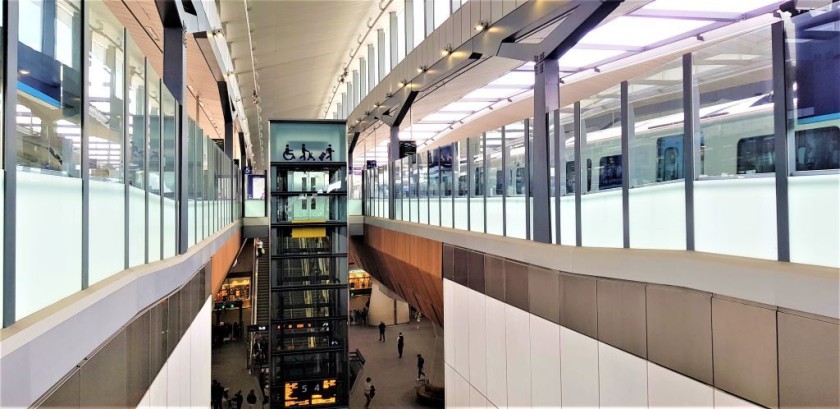
At London Bridge lifts (elevators) and escalators link the Thameslink trains to the main concourse, from where step-free access by other lifts and escalators is available to all of the other platforms/tracks in the station.
Though the Thameslink trains typically head on beyond London Bridge to multiple locations including Brighton, Gatwick Airport. and Rainham via Greenwich and Woolwich.
All trains from Cannon Street and Charing Cross stations now call at London Bridge, so there is no need to make the comparatively awkward transfers to either of those stations from King's Cross.
So you can avoid having to make the transfers to and from a 'tube' line at both King's Cross and London Bridge, plus the Thameslink trains will be air-conditioned and they have luggage racks.
Though when the Thameslink trains aren't available due to construction work, the southbound Northern line provides the alternative.
to Paddington
If you don't have heavy luggage:
Head to the the platforms in the Underground station used by both the Circle and Hammersmith & City lines and take a westbound train to Paddington, these trains will be heading to Hammersmith.
Though the Underground station at Paddington used by these lines is some distance from the main concourse, where most of the station facilities at Paddington are located.
Also the short-cut route from Circle and Hammersmith & City lines to all of the main line departures from Paddington, involves walking down staircases, one of which is pictured below.
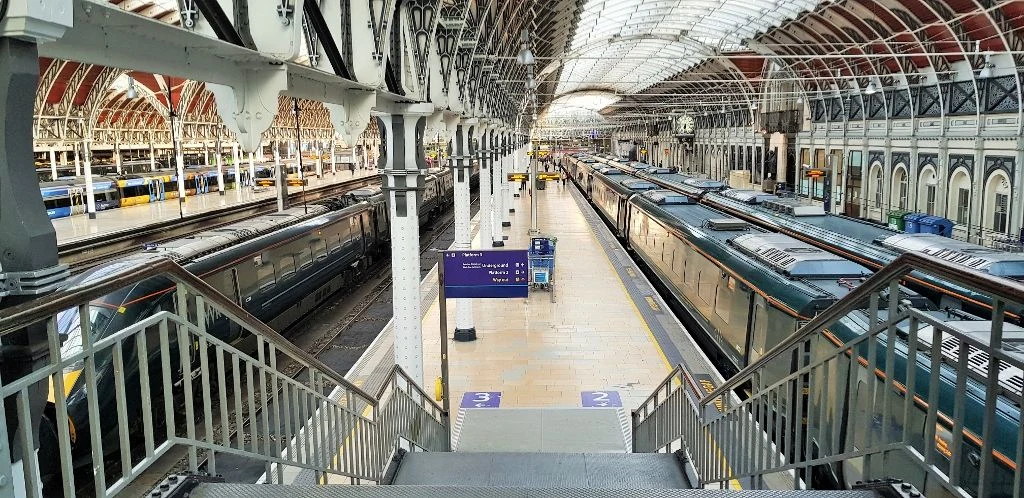
If you do have heavy luggage:
This route from King's Cross to Paddington is less direct, but it's more easily managed if you only want to use lifts (elevators) when making the transfer.
- Head over the street to St Pancras station, using the exit at King's Cross on to Pancras Road, which leads off from the main concourse on the opposite side to the departure boards.
- Once you have entered St Pancras International go straight ahead and you will then see the entrance to the part of the station, used by Thameslink trains, over to the right, on the other side of a ticket desk.
Lifts (elevators) and relatively short escalators are available down to the platform/track used by the southbound Thameslink trains, which is platform A. - Up to 16 trains per hour now depart from platform A for a one station hop to Farringdon and at that station there is a lift (elevator) on the southbound Thameslink platform down to the Elizabeth line.
It is by the front of the trains. - All westbound Elizabeth line trains from Farringdon stop at Paddington - and the access from the Elizabeth line is directly beside the main concourse
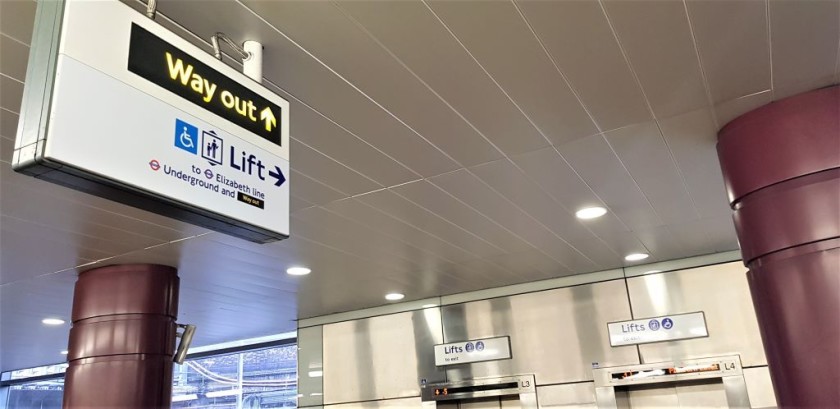
The sign above both lifts indicate that they go to the station exits, but they also go down to the Elizabeth line.
- All westbound Elizabeth line trains from Farringdon will go to Paddington.
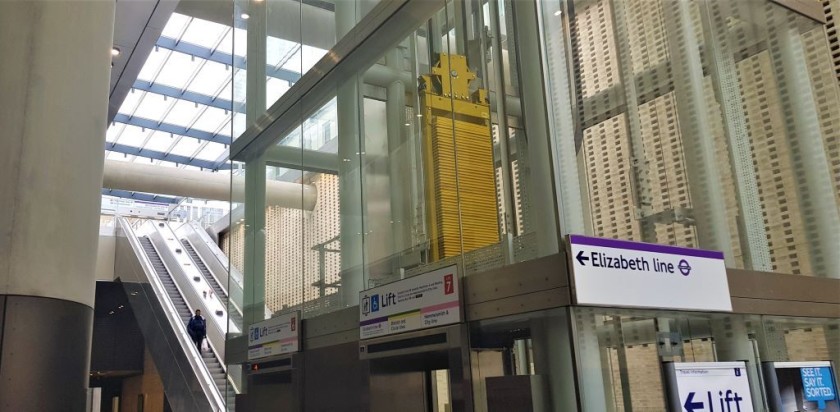
- At Paddington, the Elizabeth line is adjacent to the main concourse and both lifts (elevators) and escalators are available.
to Victoria
Taking the southbound Victoria line of the Underground is the fastest option, but it's permanently crowded and the transfer at King's Cross involves walking along seemingly never-ending subways.
Also bus line 390 doesn't provide a particularly convenient alternative in this direction, as the stop at King's Cross is in a comparatively awkward location.
An easier option for accessing Victoria station from King's Cross, particularly if you have heavy luggage, is this route.
- Head over the street to St Pancras station, using the exit at King's Cross on to Pancras Road, which leads off from the main concourse on the opposite side to the departure boards.
- Once you have entered St Pancras International go straight ahead and you will then see the entrance to the part of the station, used by Thameslink trains, over to the right, on the other side of a ticket desk.
- Lifts (elevators) and relatively short escalators are available down to the platform/track used by the southbound Thameslink trains, which is platform A.
- Up to 16 trains per hour now depart from platform A for Blackfriars;
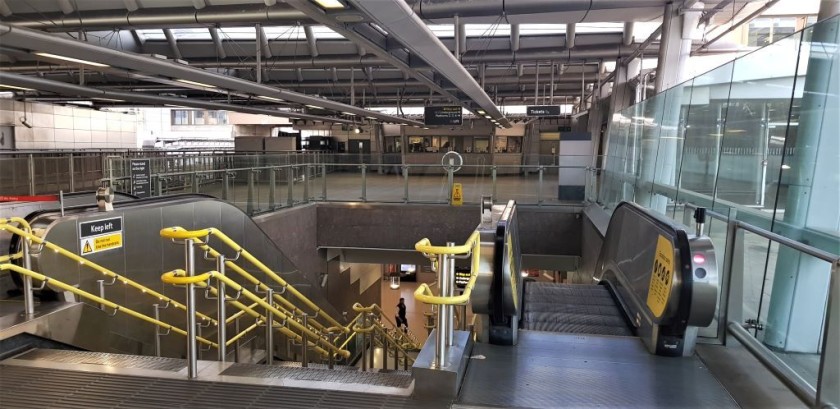
- At Blackfriars station elevators and escalators provide step-free connections to the westbound Circle and District Line.
- All of these trains will go to Victoria; though when you're on the Thameslink platform in St Pancras, board into the rear of the trains, as this will enable a quicker transfer at Blackfriars.
- The Circle and District lines aren't deep-level 'tube' lines, so at Victoria the exit from them is by using a fairly short staircase and a lift is also available.
to Waterloo
There isn't a direct Underground Line to Waterloo from King's Cross, but of the many options, SMTJ's preference is to take the Piccadilly Line southbound to Leicester Square and connect there into the southbound Northern line, as the connection between the two lines at Leicester Square involves a comparatively short set of stairs.
Though at Piccadilly Circus station an escalator link is available to the southbound Bakerloo line.
Or if you'll have heavy luggage etc, the less obvious, but escalator avoidance route from King's Cross to Waterloo is:
- Head over to the adjacent St Pancras station and take one of the 12 trains an hour from platform A, which will be heading to London Bridge.
- At London Bridge station lifts (elevators) and escalators will enable easy access to platforms 8 and 9, from where all the trains will call at Waterloo (East); trains depart at least every 5 minutes.
- Waterloo (East) station is adjacent to the main station at Waterloo, to which it has step-free access by a footbridge, though a fairly step slope leads up to it from the platforms in Waterloo (East).
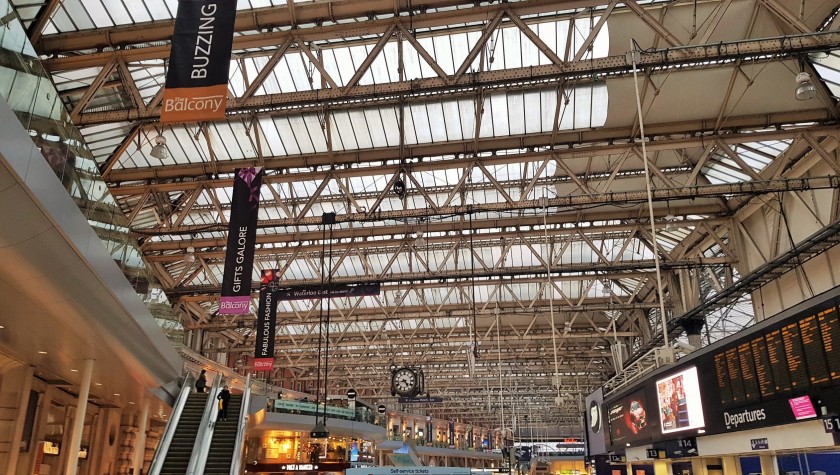
At the other end of the footbridge a lift (elevator) and escalators are available down to the main concourse.
To King's Cross
If you take the Circle, Hammersmith & City, Metropolitan or Victoria* lines to King’s Cross there is only one obvious route to follow if you want to connect to the main station, just keep following the signs which say ‘To the trains’.
*The Victoria Line trains use a different part of the station to those other three lines.
The short cut from the Northern and Piccadilly lines
However, if you arrive at King's Cross by Northern or Piccadilly line, there are two routes that can be used to transfer to the mainline station; and what's good to know is that the less obvious route is shorter.
When you step off a Northern or Piccadilly train there will be signs on the wall of the platform (track); those saying ‘The trains’ will point in you in one direction.
While other signs, pointing in the opposite direction, are showing the way to the ‘Euston Road’ exit.
The trick when transferring to the mainline station is to ignore the signs pointing the way to the trains and instead follow those signs pointing the way to ‘Euston Road’,
At the foot of the escalators, which will take you up to this Euston Road exit, there are other reassuring signs which also say to ‘The Trains’.
These escalators will lead up to an Underground ticket hall and from here, the access up to Kings Cross main station is just over to the right.
Follow the signs and you’ll then be in a passage way which leads under the concourse in the main station.
The first exit in this passage way will be over to the right, it will look as though it leads to the street, but it will take you up to a covered entrance which is right by the main concourse.
If you’ll be taking a Hull Trains, Grand Central, or LNER train and your train will be departing within the next 10 mins, then definitely use this exit; it will take you up by the access to platforms/tracks 0-8, which these trains leave from.
from Euston
It's a 10 - 15 min walk to King's Cross from Euston so being a pedestrian is easier and cheaper than taking the Underground, but if the weather isn't conducive, take the Northern Line and avoid the Victoria Line; you won't have to walk so far on arrival at King's Cross.
Or take the bus; route 91 heading to Crouch End and route 390 heading to Archway, both depart from stops in front of Euston station and arrive at a stop right beside King's Cross station
It's only a three-stop hop and avoids the need to cross busy roads.
from Liverpool Street
The direct route from Liverpool Street to King's Cross is to take any train on the westbound Circle, Hammersmith and City or Metropolitan lines
However, the access to these trains at Liverpool Street involves walking up and over a footbridge, that's somewhat hidden within the Underground station.
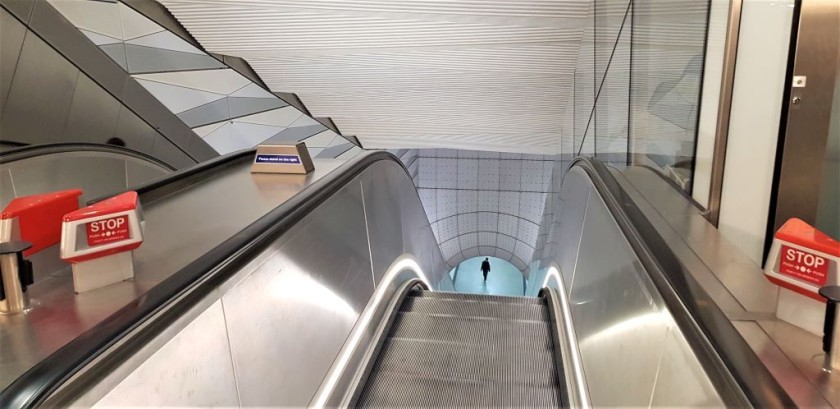
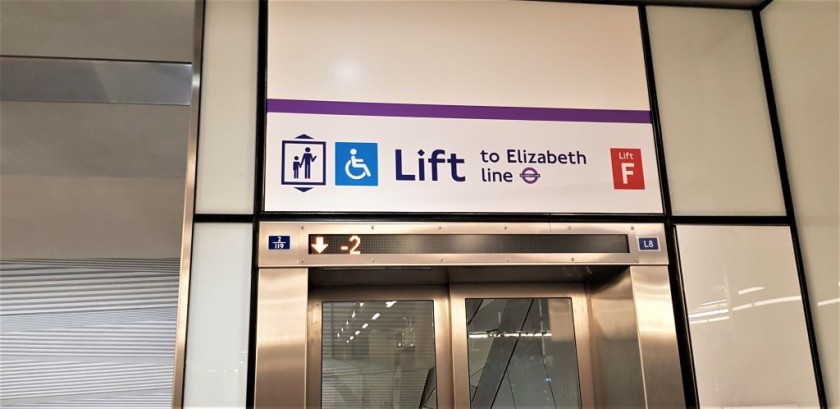
So the much easier route if you have luggage etc is
Step One:
Taking a westbound Elizabeth line train to Farringdon.
The access to the Elizabeth line at Liverpool Street is on the other side of the main Underground ticket hall, which is opposite platforms 3 - 7.
There is a lift available down into this ticket hall to the left of the short flight of stairs.
An escalator and lift (elevator) lead down to the Elizabeth line trains.
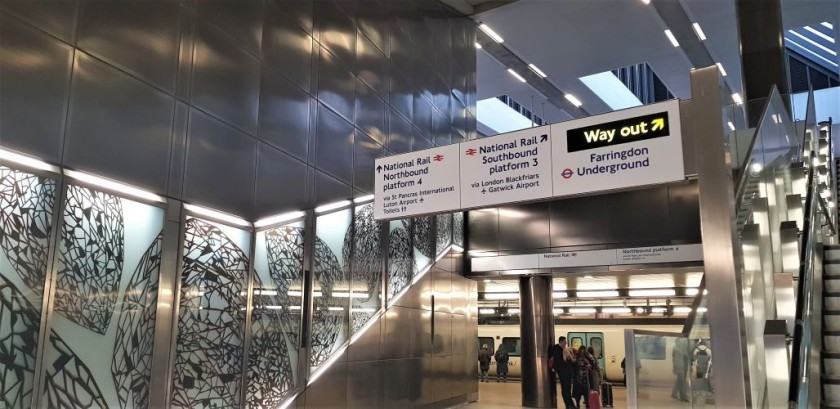
Step Two:
Connecting at Farringdon for a northbound Thameslink train to St Pancras International station, the most direct route is to take the escalator, at its top the Thameslink trains will be ahead and over to the left - as pictured above.
Step Three:
On arrival at St Pancras, use the lifts or escalators to exit the Thameslink station.
Step Four:
4. Turning left from the exit at the Thameslink part of St Pancas station and walking ahead to the street exit on Pancras Road, you'll then see King's Cross just across the street.
from London Bridge
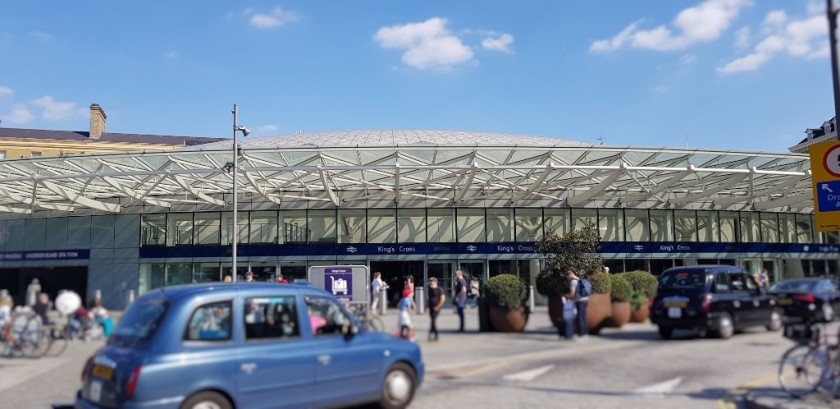
If you're on a route which heads to Cannon St or Charing Cross stations leave the train at London Bridge, but don't connect to the Northern Line, instead take a Thameslink train.
Up to 12 trains per hour now depart from platform 5 at London Bridge and take 15-20 mins to make the journey to St Pancras Thameslink.
On exiting St Pancras Thameslink station, turn to left and then go straight ahead towards the exit on the far side of the building, the main departure boards will be over on the right.
This exit from St Pancras International on to Pancras Road is literally across the street the entrance to from King's Cross pictured below.
So you can avoid having to make fairly lengthy transfers to the Northern Line at both stations; plus the trains will be air-conditioned and they have luggage racks.
Step free access by lift (elevator), to and from the Thameslink trains, is also available at both London Bridge and St Pancras.
from Paddington
If you don't have heavy luggage
Head to the Underground station at Paddington used by the Hammersmith & City line and take any eastbound train, including the Circle Line.
In this Underground station a lift (elevator) is available between the ticket hall and the trains, but the route to this station which avoids stairs, is the long way round.
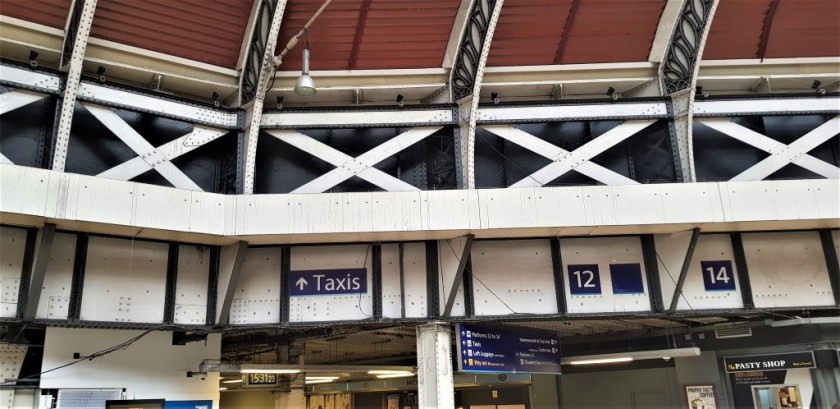
From the concourse on you need to head to the passage way which also leads to the taxi rank.
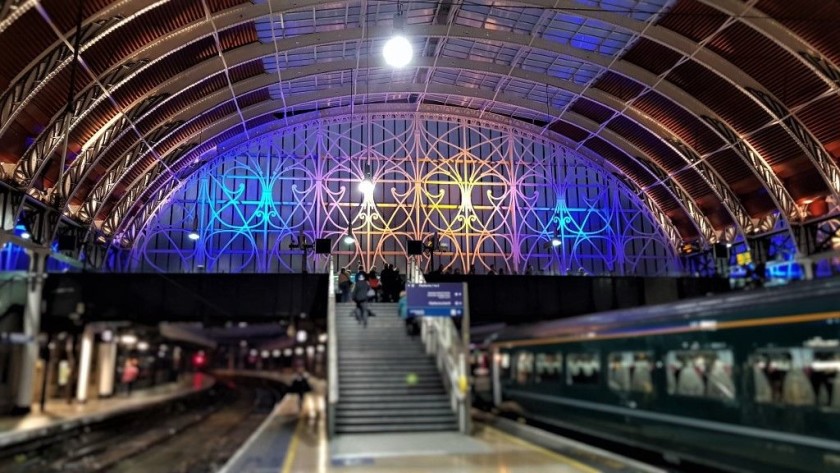
The short-cut route to this Underground station is to use the staircases which are by the rear of the trains which arrive at platforms 1 to 10, each pair of platforms has its own separate staircase.

If you do have heavy luggage:
The Elizabeth line station is right beside the main station building, parallel to platform 1.
The platforms in the Elizabeth line station can be accessed by lifts (elevators) and escalators.
Take any westbound Elizabteth line train to Farringdon

At Farringdon a step-free transfer is provided by escalator to the northbound Thameslink trains for a one-stop hop to St Pancras International Thameslink station; Or you can make the transfer to the northbound Thameslink trains by using a combination of two lifts.
Then on arrival at St Pancras, you can use the lifts or escalators to exit the Thameslink station.
Turn left from the exit at the Thameslink part of St Pancras station and walk ahead to the street exit on Pancras Road, you'll then see King's Cross station just across the street.
from Victoria
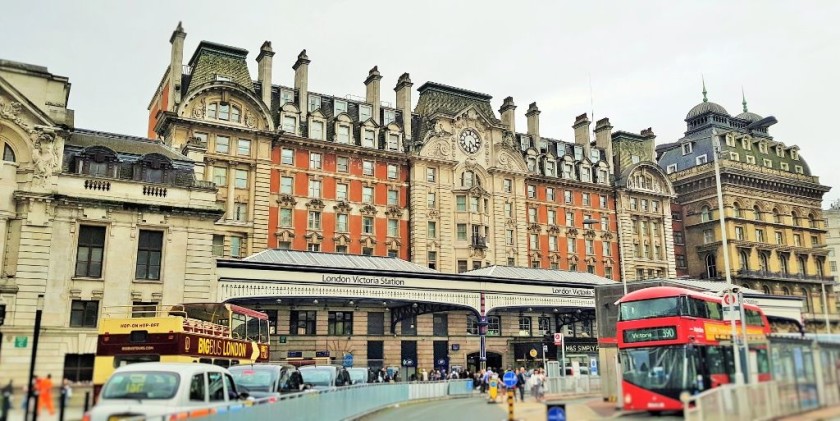
If you have time available take the comparatively frequent 390 bus heading to Archway, which will leave from the bus station right outside the main station.
It commences its journey at Victoria so you should be able to find a seat and room to store any luggage; and it arrives at a stop right beside King's Cross station.
Taking the Victoria Line is obviously quicker, but its permanently crowded and the transfer on arrival at Kings Cross-St Pancras involves walking along seemingly never-ending subways.
from Waterloo
There isn't a direct Underground Line from Waterloo, but of the many options, SMTJ's preference is to take the Bakerloo line northbound to Piccadilly Circus and connect there into the northbound Piccadilly Line.
It seems like a longer journey, but it has two advantages:
- The Bakerloo line trains only make two station calls prior to Waterloo, so easy boarding is usually available.
- At Piccadilly Circus the transfer is by esclator.
Or if your inbound train to Waterloo calls at Vauxhall station, then connect there for the northbound Victoria Line
Please support ShowMeTheJourney
This second version of ShowMeTheJourney is exciting and new, so we are genuinely thrilled that you are here and reading this, but we also need your help.
We’re striving not to let anything get in the way of providing the most useful service possible, hence a facility has been set up with DonorBox which can be used to support the running costs and make improvements.
Instead of advertising or paywalls, your financial support will make a positive difference to delivering an enhanced service, as there’s a lot of ideas which we want to make happen.
So if you have found the info provided here to be useful, please go here to say thank you.

Simon Harper
I wanted to share my passion for train travel and explain how anyone can take the fantastic journeys I have taken.

This is one of more than 100 train travel guides available on ShowMeTheJourney, which will make it easier to take the train journeys you want or need to make. As always, all images were captured on trips taken by ShowMeTheJourney.
This second version of ShowMeTheJourney is exciting and new, so we are genuinely thrilled that you are here and reading this, but we also need your help.
We’re striving not to let anything get in the way of providing the most useful service possible, hence a facility has been set up with DonorBox which can be used to support the running costs and make improvements.
Instead of advertising or paywalls, your financial support will make a positive difference to delivering an enhanced service, as there’s a lot of ideas which we want to make happen.
So if you have found the info provided here to be useful, please consider saying thank you.



